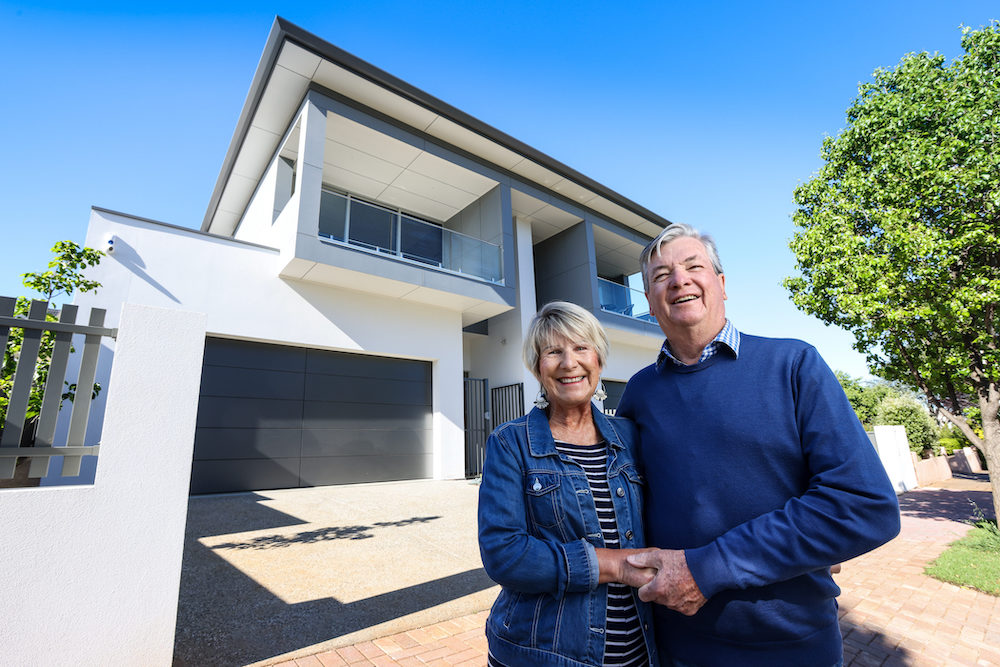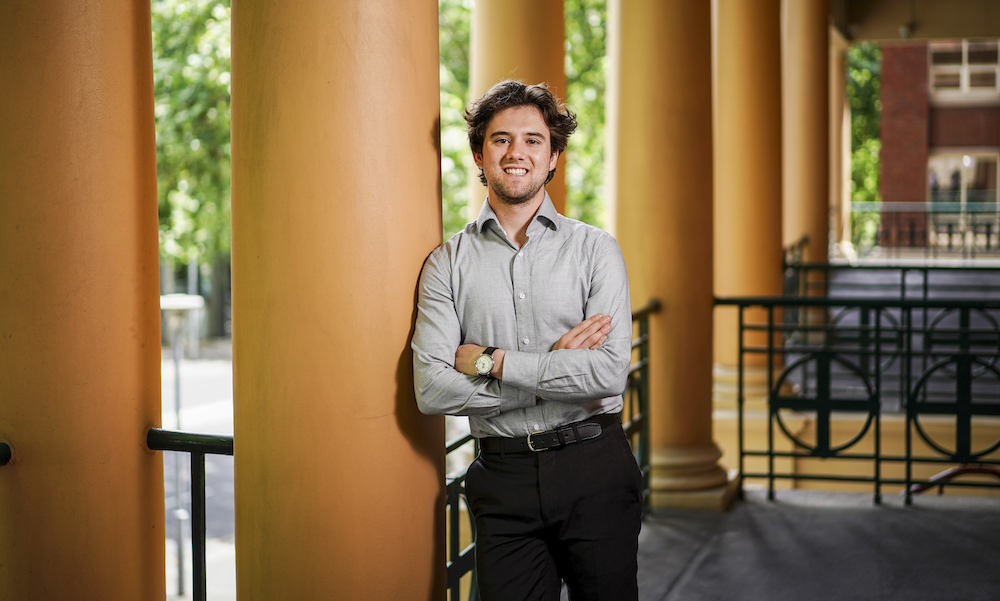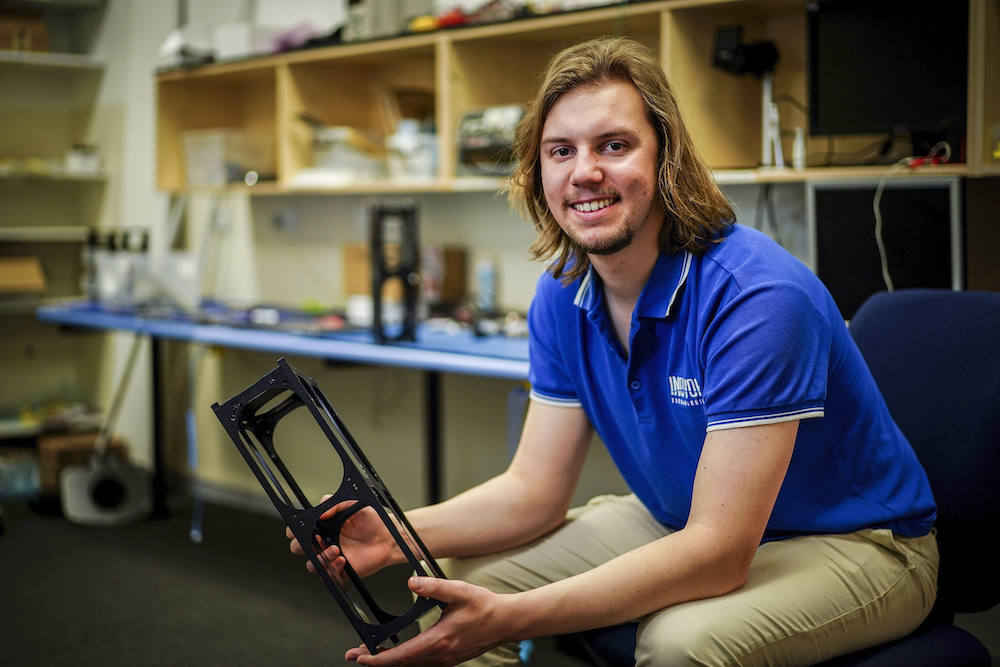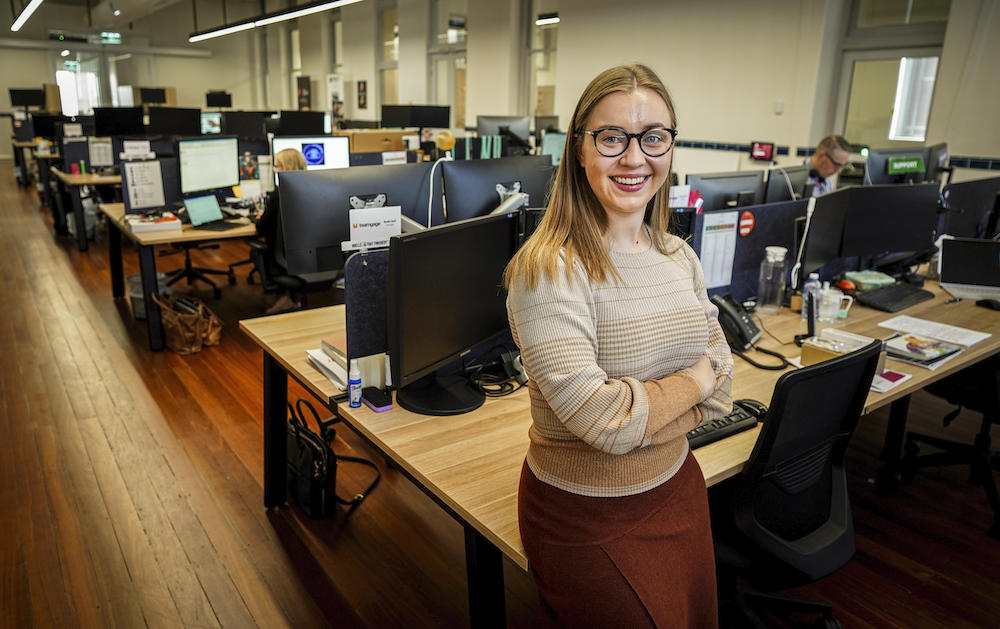REAL ESTATE
OPENING DOORS TO A BETTER LIFE
With more affordable housing, less commuting and access to hills and beaches, more and more people are calling South Australia home
South Australia is renowned across the country for its affordability when it comes to buying property, but that doesn’t mean it lacks luxury listings or multimillion-dollar mansions. In fact, Adelaide and its surrounding regions offer plenty of palatial beachfront homes and sprawling acreage estates on par with those found in Melbourne, Sydney and Brisbane, just at a cheaper price point. While certainly enticing, it’s not just affordability luring interstate residents to the south. Less traffic congestion, quick and easy access from the beach to the hills and the city to the wine regions, distinguished schools and universities, as well as world-class restaurants and a culturally and artistically diverse arts and entertainment industry offer a lifestyle to be envied.
“We certainly represent an incredible lifestyle opportunity,” says Brett Roenfeldt, industry veteran and South Australian independent auctioneer who has conducted more than 20,000 auctions throughout his extensive career. “It’s a slightly different lifestyle – more laid back, I’d suggest. We don’t have the harbour views but the lifestyle in Adelaide means you’re within an hour’s drive from world renowned wine regions.”
It’s a lifestyle most people can afford to indulge in as well, as the cost of living and property prices are much cheaper than in the eastern states. “You could pay say $2 million for a pretty nice property here and the equivalent-type property in Sydney would be more than double that,” Roenfeldt says. “You would be getting the same sort of accommodation, the same quality fit-out, the biggest benefit of course is we’ve got the liveability of that property. We’re such good value.”
Klemich Real Estate director Matt Smith says many residents hailing from the eastern seaboard are starting to realise what they are missing out on. “In speaking to interstate buyers who are looking in Adelaide, they say, ‘You don’t know how lucky you are’,” he says. “Adelaide provides not only a fantastic lifestyle but it offers affordable accommodation. There’s very, very good value buying in Adelaide. What’s deemed to be a high-end property in South Australia would be perhaps a minimum range property in Sydney, as an example.”
Sydney’s $1 million median house price is more than double Adelaide’s, which stands at $493,000, latest realestate.com.au figures show. While not as pricey, Melbourne is still much more expensive, with a median of $745,000, while Brisbane’s $549,999 is marginally higher.
The price disparity between the four cities is more evident when comparing sales records. In 2018, when tech billionaire and Atlassian co-founder Mike Cannon Brookes bought Double Bay mansion Fairwater from the Fairfax publishing family, he not only set a record for NSW but became the first person to pay more than $100 million for an Australian house.
While only half of that, Victoria’s record stands at $52.2 million and Queensland’s at $25 million – both much higher than South Australia’s $7 million sale record.

Ours is understood to be higher after prominent North Adelaide property Bishop’s Court, which was expected to fetch more than $10 million, sold in September but the price wasn’t disclosed.
Ouwens Casserly Real Estate agent Cynthia Sajkunovic sold a waterfront mansion at Henley Beach in January for $5.68 million, one of the highest sales recorded last financial year. “Locals have been quite shocked by those prices but the interstaters certainly aren’t,” she says. “They see it as really good value. For high-end properties, you certainly get greater value here than you get interstate.”
David and Maree Crichton are among those who have moved to Adelaide from interstate in recent months. They returned to Adelaide, where they lived for 10 years a few decades ago, to be reunited with family after moving to Brisbane about 20 years ago for work. Now retired, the couple want to be able to spend more time with their growing family.
“We looked at our time in life and we thought, ‘if we don’t make the move now it’s going to be too difficult’,” Ms Crichton says. “It’s been a good move for us.”
The couple bought a new four-bedroom house in St Georges for just over $1.4 million after selling their Balmoral home, which they also bought new two decades ago, for slightly less. They now have a bigger and newer house, a slightly larger block, are closer to the city and are enjoying being able to get around without getting stuck in gridlock every time they get in the car.
“It’s not nearly as congested,” Maree says. “We had to pay a little bit more than we were anticipating but we got a better deal – we realised we got a better deal after we were living in here. “We thought we’d downsize but we’ve actually upsized.
“I think the first week we were here, we really didn’t believe we were living in this house. We were a little bit surprised we got the property.”
The couple acknowledge they would have to spend much more on a larger block to be able to build a house of that size and calibre in Brisbane. These days, most of the new properties being built in the area they left are townhouses and units, so they would have had to have moved further away from the city if they wanted a new established house.
It is not just interstate residents discovering Adelaide’s great value and enviable lifestyle, though. Williams Real Estate partner Stephanie Williams has recently been helping families from Hong Kong, London and New York find properties in South Australia
“Adelaide has really got a global presence right now,” she says. “In Sydney, it’s all about the harbour views, in Adelaide it’s all about the leafy streets. With what they could buy in Sydney, they can get a beautiful house in the eastern suburbs as well as a beach house.
“We’ve got it far better here in South Australia.”
UNIQUE EXPERIENCE
WALK IN THE FOOTPRINTS OF HISTORY
From bush to beach, South Australia’s unique experiences attract thousands of visitors each year – but there’s more to our top tourist attractions than you might think
South Australia is rich in beauty spots and world-famous for its food and wine. But the state is more than that, boasting many natural and scientific wonders that can be found nowhere else on Earth. We’ve picked a few that could add a sense of wonder to a truly memorable trip.
The Oodnadatta Track
Stretching more than 600km in the northeast of South Australia, the Oodnadatta Track runs from Marree in the south-east to Marla in the north-west and is one of the Outback’s most iconic trips.
The track connects a series of “mound springs”, which look like little volcanoes in the desert, bubbling water up from the Artesian Basin. For hundreds of thousands of years these springs have provided life-giving water, first to Aboriginal people who used the track as a trading route, and later to explorers and pastoralists. The mound springs are also unique islands of biodiversity.
“At last count – and it might’ve gone up – there are 50 species that are found only in these mound springs,” says Flinders University Professor Mike Lee, who is also senior researcher (palaeontology) at the South Australian Museum. “And many of them are unique to a single mound spring because they have stayed isolated for so long. There’s snails and shrimps only found in this one habitat literally the size of a swimming pool.”
And, of course, the springs are fantastic for bird watchers. “Every bird within hundreds of square miles, if that’s the only water, boom, they’re going to go there,” Prof Lee says. “You’ll get all rare water birds as well as land birds side-by-side, which you wouldn’t under normal circumstances, because they’re all spread out.”
Naracoorte Caves
Located in the Limestone Coast region of South Australia, Naracoorte Caves National Park is the state’s only World Heritage-listed site. Its underground network of limestone caves contain vast bone deposits that preserve “time capsules” of the past half a million years.
Here you can see everything from the giant kangaroos and marsupials that roamed the Australian bush until their demise around 45,000 years ago, to giant lizards and an extinct five-metre snake. In all there are about 20 species of these giant animals scientists call megafauna, including the 2500kg Diprotodon, whose closest surviving relatives include wombats and the koala.
“Sediment deposits accumulated undisturbed over hundreds of thousands of years and contain the remains of thousands of animals,” says palaeontologist Dr Liz Reed from the South Australian Museum. “Naracoorte caves developed around about a million years ago, forming entrances to the surface over thousands of years which became receptacles to build these archives of sands and animal remains. So they’ve faithfully recorded the past for us in these underground libraries.”
For scientists like Reed this unique experience provides research possibilities to address today’s problems. “Because these animals aren’t so far removed from modern times as dinosaurs, we are essentially studying modern Australian fauna with some extinct animals among them,” she says. “They are really relevant to tackling questions about climate change, extinctions, and patterns of animal response to habitat change – those sorts of pressing questions.”
Emu Bay
Emu Bay on Kangaroo Island to the south of Adelaide is prized by holiday-makers for its beautiful beach and four-and-a-half kilometres of clean white sand. But to scientists it represents vital evidence of the development of life on Earth.
The shale there has preserved minute details of early animals – both those with and those without skeletons. Because of the unique conditions, Emu Bay fossils preserve not only body outlines but also gut contents, appendages and even eyes in a quality that looks almost alive.
The animals lived there during a period called the Cambrian, which began about 512 million years ago – a unique snapshot of one moment in development of life on Earth. “We now see that most of the animals here fall into some of the groups we know today,” says palaeontologist associate professor Diego Garcia-Bellido. “But there’s also some forms that don’t fit into any of those groups. That’s one of the attractive things about the Cambrian. We’re looking at fauna that are so early in animal evolution that some of its members did not belong in any of the classes that we see today.”
The landscape would’ve looked very different too. At the time, there was only life in the oceans and none on land. Kangaroo Island would not have existed and the area would have been shallow water, slowly being filled with erosion from the continent behind it.
We know that it was loosely connected to the ocean – what is now the Great Australian Bight – because scientists see some animals that have come into the basin. “At the time, when there are no plants, any intensive rain would have produced a lot of sediment run-off into this shallow basin,” Garcia-Bellido says. “We think that Emu Bay could have been at about 40 to 60m deep.”
Adelaide’s mining heritage
Most Australians probably don’t realise that an Adelaide suburb was the birthplace of the country’s mining industry.
The first mines were at Glen Osmond, where prospectors discovered silver and lead in 1841.
The first gold mine commenced at Montacute in the Adelaide Hills in 1846 – five years before the discovery of gold in the eastern states and only 10 years after the South Australian colony was founded. The surrounding area is now a conservation park with walking tracks and hikes.
“The colony was struggling financially and the government was very happy for people to look for deposits, to help add some money to the coffers,” says Ben McHenry, South Australian Museum senior collections manager for earth sciences.
The early days of mining were also a golden age for eccentric characters. One of the best-known was Johannes Menge, “the father of South Australian mineralogy”. Born in Germany, he arrived in the colony in 1837 to work for the South Australian Company as a geologist. But the irascible Menge soon parted ways with the government and headed north to what is the Barossa Valley which he believed would be rich in gold. He ended up living as a hermit in a cave, which is still there on the banks of Jacob’s Creek.
Coober Pedy
A trip to Coober Pedy is a journey back in time 100 million years to a landscape that was once the bottom of a giant inland sea teeming with life, including giant marine reptiles. The extraordinary geological history of the region preserved this life in Coober Pedy’s most famous export – turning the bones of ancient creatures into glittering fiery opal.
It works this way. Opals form as water runs down through the earth, it picks up silicon dioxide from sandstone, and fills cracks in the rock. When the water evaporates, it leaves behind the silica gem – a rock opal. But when the water fills the space left behind by a decomposing animal, the opal forms to fill the space like a giant natural mould.
South Australia is known as the opal capital of the world – 80 per cent of global output comes from here. Not only is Coober Pedy worth a trip for the opal and opalised fossils, but also to experience the unique lifestyle of the miners who live underground to escape the searing summer heat in this Outback town.
Flinders Ranges
The Flinders Ranges is the jewel in the crown of South Australia’s Outback experience and rich in scientific and anthropological artefacts. In many places the earth here has been twisted on its side, meaning we can see the geological ages laid out before us horizontally.
Driving along the Brachina Gorge geological trail, for example, you pass through 130 million years of history and geological events that led up to the origins of marine animals in the oceans of the world.
Here visitors can see the specific site marking the beginning of the Ediacaran period – the first new geological period to be named anywhere on Earth for more 100 years, and the only one based on Australian geological evidence.
Fossils from this period, which ranged from 635 to 541 million years ago, show organisms that although very successful at the time, did not survive to the next geological period, the Cambrian. They still are a mysterious link to the very beginnings of complex life on Earth.
LOT FOURTEEN
A WHOLE LOT OF TALENT
Some of the brightest minds are collecting at South Australia’s exciting new innovation precinct in the heart of Adelaide’s CBD
William Abbott
DTEX Systems graduate counter insider-threat intelligence engineer

After a year of working at DTEX Systems in the heart of Adelaide’s Lot Fourteen innovation precinct, young mathematician and bright spark William Abbott, 21, is in his element. He found his full-time role with DTEX after taking up an internship with the cyber intelligence company in his final year of advanced mathematical sciences at The University of Adelaide.
“I always thought I was OK at maths, which helps,” Abbott says. “When I got to university, I decided to just do what I liked and hopefully follow my passion and see where it ended. Cyber security was probably one of the last places I thought I would go.”
At DTEX he found many ways to apply the mathematical theory he had learned to real-world problems, helping customers detect insider cyber security threats and manage large company computer networks through behaviour profiling.
“The team I’m working with is so open to questions,” he says. “I ask a lot of questions and they are always able to answer or point me to someone who can. If I bring something I think will work – an idea – they give me actual feedback to improve it.”
At Lot Fourteen, Abbott can bounce his ideas off other bright minds working across the precinct. “It’s a good ecosystem of sharing where, if we have lunch, we can sit down and talk and be open about ideas. It fosters a lot of creativity,” he says. Meanwhile’ he is just focused on bringing his best ideas to the company and “giving back as much as my skills can allow”.
Alex Priest
Inovor Technologies aerospace engineer

Alex Priest believed he would have to leave South Australia, and even Australia, to find a career in aerospace engineering. “I didn’t think it was going to be a possibility but now it very much is, it’s pretty awesome,” he says. Priest, 25, began working for space technology company Inovor Technologies, based at Lot Fourteen, about two and a half years ago, after impressing CEO Dr Matthew Tetlow during an honours project at The University of Adelaide.
“As a kid I was always interested in science fiction (and) space-related things,” he says. “At school, aerospace engineering was one of the things I saw I could do. I picked that quite early and just stuck with it.”
At Inovor, he gets to do mechanical designs for satellites, mission design and systems engineering. He is also doing work that began with his honours project, using simple ground-based cameras to monitor large satellites in very distant orbits, 36,000km above the Earth.
“When I first started, there were only about 10 people working here – they mentored me and helped me a lot,” Priest says. “But, over the last year and a half, we’ve really expanded and we are up to 40 people now.”
Lot Fourteen is proving a perfect environment for his work. “We get to interact and work on different projects with people – we’ve been working with Neumann Space, who are next door to us, and there’s Myriota,” he adds. “Having more people with differing experiences to work off, all in the same space together, is quite unique and exciting.”
Madison O’Brien
Teamgage customer success analyst

After four months with work culture specialists Teamgage, Madison O’Brien, 22, is convinced the Stone & Chalk start-up hub environment at Lot Fourteen is the right place for her.
“Start-ups are a dynamic, fast-evolving environment in which to work,” she says of the Lot Fourteen-based business powered by FIXE, the Future Industries eXchange for Entrepreneurship. “If there’s someone who wants to grow professionally, working in a start-up is absolutely the place for you.”
O’Brien, who studied a Bachelor of Business specialising in HR management at Flinders University, is an analyst who helps assemble feedback from customers’ employees. “I get to help thousands of employees make sure their voices are heard about how they are feeling, particularly as a result of COVID-19,” she says.
By applying artificial intelligence programs to the feedback, O’Brien can present insights learned and key strategies to help clients improve their organisations.
O’Brien, who is also studying for a Graduate Diploma in Psychology, focused on HR after discovering that people, on average, spend 90,000 hours at work during their lifetime: “That’s a lot of time,” she says.
“Part of choosing HR was to have an influence on that, to make a difference to the way people experience work – wanting people to wake up and jump out of bed because they enjoy going to work.”
She finds Lot Fourteen an inspiring place to work. “It is, at its core, a community of like-minded individuals, people who want to see a change in the world,” she says. “We chose … to do something we believe in. It’s great because people here are the most talented in their fields.”